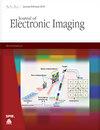Low-light image enhancement using negative feedback pulse coupled neural network
IF 1
4区 计算机科学
Q4 ENGINEERING, ELECTRICAL & ELECTRONIC
引用次数: 0
Abstract
Low-light image enhancement, fundamentally an ill-posed problem, seeks to simultaneously provide superior visual effects and preserve the natural appearance. Current methodologies often exhibit limitations in contrast enhancement, noise reduction, and the mitigation of halo artifacts. Negative feedback pulse coupled neural network (NFPCNN) is proposed to provide a well posed solution based on uniform distribution in contrast enhancement. The negative feedback dynamically adjusts the attenuation amplitude of neuron threshold based on recent neuronal ignited state. Neurons in the concentrated brightness area arrange smaller attenuation amplitude to enhance the local contrast, whereas neurons in the sparse area set larger attenuation amplitude. NFPCNN makes up for the negligence of pulse coupled neural network in the brightness distribution of the input image. Consistent with Weber–Fechner law, gamma correction is employed to adjust the output of NFPCNN. Although contrast enhancement can improve detail expressiveness, it might also introduce artifacts or aggravate noise. To mitigate these issues, the bilateral filter is employed to suppress halo artifacts. Brightness is used as coefficient to refine the Relativity-of-Gaussian noise suppression method. Experimental results show that the proposed method can effectively suppress noise while enhancing image contrast.利用负反馈脉冲耦合神经网络增强弱光图像效果
低照度图像增强从根本上说是一个难题,需要同时提供卓越的视觉效果和保持自然的外观。目前的方法通常在对比度增强、降噪和减少光晕伪影方面表现出局限性。负反馈脉冲耦合神经网络(NFPCNN)的提出,为对比度增强提供了一种基于均匀分布的合理解决方案。负反馈会根据神经元最近的点燃状态动态调整神经元阈值的衰减幅度。亮度集中区域的神经元设置较小的衰减幅度以增强局部对比度,而稀疏区域的神经元则设置较大的衰减幅度。NFPCNN 弥补了脉冲耦合神经网络对输入图像亮度分布的疏忽。根据韦伯-费希纳定律,NFPCNN 的输出调整采用伽玛校正。虽然对比度增强可以提高细节表现力,但也可能会引入伪影或加重噪声。为了缓解这些问题,我们采用了双边滤波器来抑制光晕伪影。亮度作为系数被用来完善高斯相对噪声抑制方法。实验结果表明,所提出的方法能有效抑制噪声,同时增强图像对比度。
本文章由计算机程序翻译,如有差异,请以英文原文为准。
求助全文
约1分钟内获得全文
求助全文
来源期刊

Journal of Electronic Imaging
工程技术-成像科学与照相技术
CiteScore
1.70
自引率
27.30%
发文量
341
审稿时长
4.0 months
期刊介绍:
The Journal of Electronic Imaging publishes peer-reviewed papers in all technology areas that make up the field of electronic imaging and are normally considered in the design, engineering, and applications of electronic imaging systems.
 求助内容:
求助内容: 应助结果提醒方式:
应助结果提醒方式:


